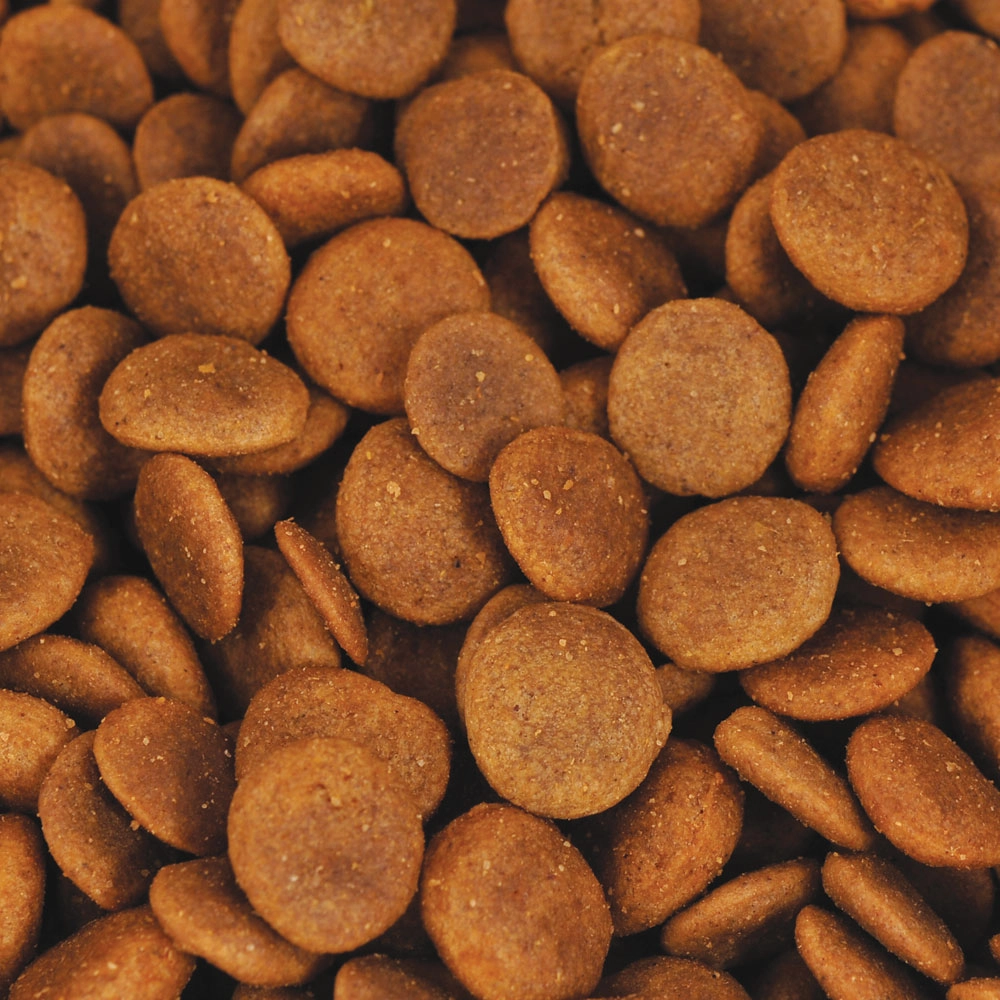Are you struggling to create the perfect Sheepadoodle feeding chart for your furry friend? Choosing the right feeding plan can make all the difference in your Sheepadoodle’s health and happiness.
As a passionate Sheepadoodle owner and advocate, I understand that providing proper nutrition is key to raising a thriving pup. That’s why I’m sharing expert advice that goes beyond generic tips, offering practical guidance rooted in real-world experience with this lovable breed.
A tailored Sheepadoodle feeding chart is essential for supporting your dog’s energy, growth, and long-term wellness. The right portion sizes and meal schedules can keep your Sheepadoodle in top shape, whether they’re a bouncy puppy or a cuddly senior.
In this guide, you’ll discover how to craft a feeding routine, choose the best dog food, and meet your Sheepadoodle’s unique nutritional needs by age and size.
Let’s get started!
Introduction
Feeding your Sheepadoodle the right way is key to keeping them healthy, happy, and full of energy. Because Sheepadoodles have unique nutritional needs based on their size and life stage, proper feeding helps prevent issues like obesity, allergies, and digestive troubles.
That’s why we created a simple, easy-to-follow Sheepadoodle feeding chart just for owners like you. This breed-specific tool breaks down portion sizes, meal frequency, and food recommendations from puppyhood to senior years, making mealtime stress-free.
At Sheepadoodle, we’re more than just a resource—we’re a community. Along with expert care tips, our feeding chart connects you to fellow Sheepadoodle lovers dedicated to giving their dogs the best nutrition possible. Let’s make healthy feeding a breeze for your furry friend.
Understanding Sheepadoodle Nutritional Needs

Sheepadoodles vary quite a bit in size and energy. Some are on the larger side, while others stay medium-sized, and their activity levels can range from moderately active to very energetic. Because of this, their diet needs to support their unique build and lifestyle.
High-quality protein is a must to keep their muscles strong, while balanced fats supply the energy they need without overloading them. It’s best to avoid fillers like artificial additives and excess grains, which won’t add much nutrition and could upset their stomachs.
As Sheepadoodles grow, their nutritional needs change. Puppies require more calories and nutrients to fuel growth, adults need stable portions to maintain health, and seniors benefit from diets that support joint health and digestibility.
Many Sheepadoodles have sensitive stomachs or allergies, so food choices should be made carefully. Limited ingredient diets or hypoallergenic options often work well to prevent digestive problems and skin issues. Keeping an eye on how your Sheepadoodle reacts to their food will help you adjust their meals for maximum health and happiness.
Sheepadoodle Feeding Chart by Age and Size
Feeding your Sheepadoodle right means knowing what to give and when. Here’s a simple breakdown by age and size to keep your pup healthy and happy.
Puppy Feeding Chart 8 Weeks to 12 Months
- Portion sizes: Small meals, about 3 to 4 times a day
- Meal frequency: Puppies have fast metabolisms, so frequent feeding helps fuel their growth
- Best food types: High-quality puppy formulas rich in protein and fat; avoid fillers and artificial additives
Adult Feeding Chart 1 to 7 Years
- Portion sizes: Adjust according to weight, usually 2 meals daily
- Meal frequency: Twice a day keeps energy stable and prevents overeating
- Food recommendations: Balanced adult dog food with quality protein and moderate fat; consider size-specific formulas
Senior Feeding Chart 7 Plus Years
- Portion sizes: Reduced to avoid weight gain and slow metabolism
- Joint-supporting nutrients: Look for foods with glucosamine, chondroitin, and omega fatty acids
- Meal frequency: Often 2 smaller meals to aid digestion and maintain energy
Visual Feeding Chart
A handy guide matching age, weight, and size classes helps you measure portions easily. It’s a quick reference to keep your Sheepadoodle on track whether they’re a growing puppy or a wise senior.
Following this chart makes feeding simple, keeping nutrition spot on throughout your Sheepadoodle’s life stages.
Choosing the Best Food for Your Sheepadoodle
Picking the right food for your Sheepadoodle can feel overwhelming, but knowing the basics helps a lot. Here’s a quick comparison of the main feeding options:
- Kibble: Convenient and easy to store. Look for high-quality kibble with real meat listed first and minimal fillers like corn or soy.
- Raw diet: Focuses on fresh, uncooked ingredients. It can improve coat and energy but requires careful prep to avoid harmful bacteria.
- Homemade meals: Gives full control over ingredients. Just make sure your recipe balances protein, fats, and carbs for your dog’s needs.
For everyday feeding, many Sheepadoodle owners trust vet-approved brands such as:
- Blue Buffalo Life Protection
- Wellness Core Grain-Free
- Merrick Grain-Free
These brands offer balanced nutrition tailored for different life stages and often include options for sensitive stomachs.
Supplements can be a big help for joint support and a shiny coat. Look for glucosamine, chondroitin, and omega fatty acids when choosing.
Watch out for low-quality foods that include:
- Artificial colors, flavors, or preservatives
- Unspecified meat by-products
- Excessive fillers like wheat or corn
These ingredients can cause allergies or digestive issues. Always check labels carefully to keep your Sheepadoodle happy and healthy.
At Sheepadoodle, we recommend sticking to clean, nutrient-rich foods and consulting your vet before making big diet changes.
Feeding Tips for Sheepadoodle Owners
Keeping your Sheepadoodle healthy starts with a solid feeding routine. Here’s how to make mealtime smooth and safe:
- Stick to a schedule. Feed your Sheepadoodle at the same times every day. Consistency helps their digestion and prevents begging or overeating.
- Measure portions carefully. Use a kitchen scale or measuring cup to serve the right amount based on their age, weight, and activity. Avoid free feeding to reduce the risk of obesity.
- Watch their body condition. Keep an eye on your dog’s weight and shape. Adjust portions if they’re gaining too much or losing weight. A fit Sheepadoodle has a visible waist and ribs you can feel but not see.
- Try slow feeding techniques. Puzzle feeders or slow-paced bowls make your dog work for their food, which helps prevent gulping and supports mental stimulation.
- Always provide fresh water. Hydration is key for digestion and overall health. Refresh their water bowl several times a day.
- Manage allergies with care. If your Sheepadoodle has sensitive stomach issues or allergies, consider limited ingredient diets or hypoallergenic foods. Consult your vet before making changes.
Following these tips will keep your Sheepadoodle happy, healthy, and full of energy.
Common Feeding Mistakes to Avoid
Feeding your Sheepadoodle the right way is key to keeping them healthy. Here are some common mistakes to watch out for:
-
Overfeeding and free feeding risks
Leaving food out all day or giving too much at mealtime can lead to weight gain and health problems. Stick to measured portions based on your dog’s age and size. -
Ignoring life stage-specific diet needs
Puppies, adults, and seniors all have different nutritional needs. Feeding the wrong type of food for their stage can cause deficiencies or excesses, so switch diets accordingly. -
Rapid diet changes causing digestive issues
Switching foods too fast can upset a Sheepadoodle’s sensitive stomach. Introduce new food slowly over 7-10 days to avoid diarrhea or vomiting. -
Neglecting hydration and dental health care
Always provide fresh water with meals and throughout the day. Don’t overlook dental care, since poor teeth can affect feeding and digestion.
Avoiding these feeding mistakes helps keep your Sheepadoodle happy and thriving.
FAQs About Sheepadoodle Feeding

How much to feed a Sheepadoodle puppy
Sheepadoodle puppy feeding depends on their age, weight, and activity level. Generally, feed your puppy 3 to 4 meals a day with portion sizes based on their current weight. Use a feeding chart as a guide but adjust slightly if your puppy seems too hungry or gains too much weight. Watch for steady growth and healthy energy levels.
Is raw food suitable for Sheepadoodles
Raw food diets can work well for some Sheepadoodles, especially if they have allergies or sensitive stomachs. However, raw feeding requires careful planning to ensure balanced nutrition and hygiene. Consult your vet before switching to raw food to confirm it meets your dog’s needs safely.
What food is best for Sheepadoodles with allergies
For Sheepadoodles with allergies, limited ingredient diets or hypoallergenic dog foods are best. Look for options without common allergens like beef, chicken, or grains. Grain-free and novel protein diets often help reduce reactions. Always transition diets slowly and watch for any signs of skin or digestive issues.
How to recognize overfeeding in Sheepadoodles
Overfeeding signs include gaining excess weight, difficulty moving, and a noticeably round belly. Also, watch for reduced energy and increased panting after light activity. Monitor your dog’s body condition score and adjust portion sizes if you notice these symptoms.
When to switch your Sheepadoodle to adult food
Most Sheepadoodles move from puppy to adult food around 12 months, depending on their size. Larger dogs may stay on puppy food a bit longer. Transition gradually over 7–10 days to avoid stomach upset, mixing increasing amounts of adult food with decreasing puppy food each day.
Feeding your Sheepadoodle the right way is key to keeping them happy and healthy. Tailored feeding charts make it simple to understand exactly how much and what kind of food your dog needs at every life stage. Using these breed-specific guides helps avoid common feeding mistakes, supports their energy levels, and manages any sensitivities effectively.
I encourage you to download our detailed Sheepadoodle feeding chart to get started on the right path. Join the Sheepadoodle community to share experiences, get tips, and stay updated on the best care practices. Don’t hesitate to consult your vet to fine-tune your dog’s diet—that personalized advice matters.
Sheepadoodle is your trusted resource for everything this special breed needs. We’re here to support you with reliable information and practical tools that make caring for your Sheepadoodle easier every day.
Additional Resources
To help you care for your Sheepadoodle even better, check out these related posts on grooming, training, and health tips tailored just for your dog’s breed and size. For trusted feeding guidelines, the American Kennel Club and the Association of American Feed Control Officials websites offer clear, up-to-date info on dog nutrition standards.
Don’t forget, the Sheepadoodle community is full of fellow owners sharing real-life advice and experiences. Joining online forums or local groups can give you extra support and keep you in the loop with the latest care tips. Engaging with others who know your Sheepadoodle’s unique needs makes feeding and overall care easier and more enjoyable.

